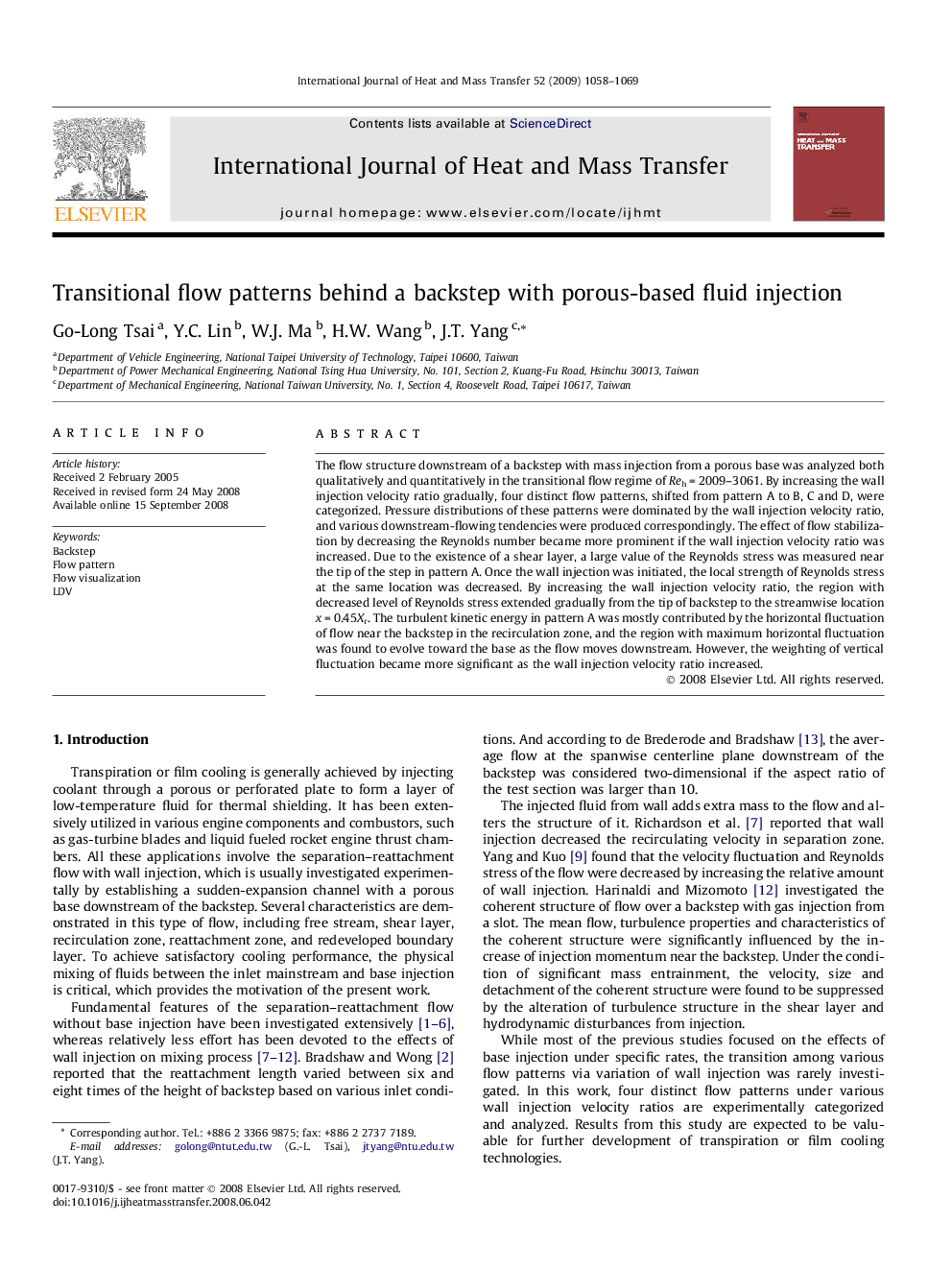| Article ID | Journal | Published Year | Pages | File Type |
|---|---|---|---|---|
| 660644 | International Journal of Heat and Mass Transfer | 2009 | 12 Pages |
The flow structure downstream of a backstep with mass injection from a porous base was analyzed both qualitatively and quantitatively in the transitional flow regime of Reh = 2009–3061. By increasing the wall injection velocity ratio gradually, four distinct flow patterns, shifted from pattern A to B, C and D, were categorized. Pressure distributions of these patterns were dominated by the wall injection velocity ratio, and various downstream-flowing tendencies were produced correspondingly. The effect of flow stabilization by decreasing the Reynolds number became more prominent if the wall injection velocity ratio was increased. Due to the existence of a shear layer, a large value of the Reynolds stress was measured near the tip of the step in pattern A. Once the wall injection was initiated, the local strength of Reynolds stress at the same location was decreased. By increasing the wall injection velocity ratio, the region with decreased level of Reynolds stress extended gradually from the tip of backstep to the streamwise location x = 0.45Xr. The turbulent kinetic energy in pattern A was mostly contributed by the horizontal fluctuation of flow near the backstep in the recirculation zone, and the region with maximum horizontal fluctuation was found to evolve toward the base as the flow moves downstream. However, the weighting of vertical fluctuation became more significant as the wall injection velocity ratio increased.
